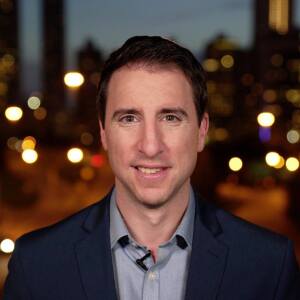ALBANY, N.Y. — In so many communities around our country, there is frustration. People are tired of waiting for leaders to solve problems, and they feel compelled to step up as best they can.
Jammella Anderson took her big step last year.
"I like to frame it as a food apartheid," she said as she drove through her home city of Albany, N.Y. "Growing up here, people think that Black is synonymous with poor. It's not that the people are poor. It's that the resources have been taken from them, because of redlining, because of systemic racism, because of all these factors."
The phrase is food desert. It’s an area where affordable, nutritious food is beyond reach for those without transportation. But deserts are part of nature. What Anderson sees in Albany was very much nurtured. The same communities marked for redlining 80 years ago – largely Black communities where residents were cut off from financing homes – are still where most of Albany’s Black residents live today. Today, it has some of the widest racial gaps in education, poverty, and access to food.
“There are so many people who don’t realize it’s happening," she said.
Last year, in the most intense of times, Anderson decided to address it.
“It was like, ‘How do I turn this anger into something?'" she said.
Anger is now action in the form of Free Food Fridge Albany. Every day, Anderson puts fresh food in refrigerators stationed in Albany’s poorest parts. She started with one fridge last summer. Now it’s seven, and they’re always busy.
Veronica Avery has lived in Albany for years.
“People come here every day," Avery said. "That’s why it stays empty all the time, because people always come in here getting food, and you’ll be surprised what people are going through.”
In recent years, free fridges have caught on. The website freedge.com has a database of more than 200 nationwide, from Buffalo to Sacramento to Colorado. They reflect the need on the ground to fill in the gaps where systems have failed.
“People can wear a Black Lives Matter shirt," Anderson said. "People can put a decal on their window. People can do these things, which are great and provides some safety. But a lot of times it’s not providing the safety that we need.”
Anderson has found farmers and volunteers willing to help. She’s been given shoutouts by both New York Senators. And this past winter, she posed next to a fridge for the cover of Time Magazine. But as this winter nears, frustration remains high.
“I’ve gotten so many awards from the government here," Anderson said. "And it’s like I’m getting awards for doing their work for free. They’re not paying me to do this. I’m not getting money from them. I’m filling a gap for them, because they’re not … they don’t understand the community.”
In one afternoon with Anderson, that community becomes clear.
“There’s pressure to keep doing more and more and more, but it’s hard to keep up sometimes," Anderson said. “I want people to come up to me and know that I will find a way to help them. But it does cause a little bit of burnout."
She drives down the road and reflects.
“I want people to walk down the street here," Anderson said, "and feel like, ‘Wow, there is a sense of community here, and I am supported, and I am protected.'"






